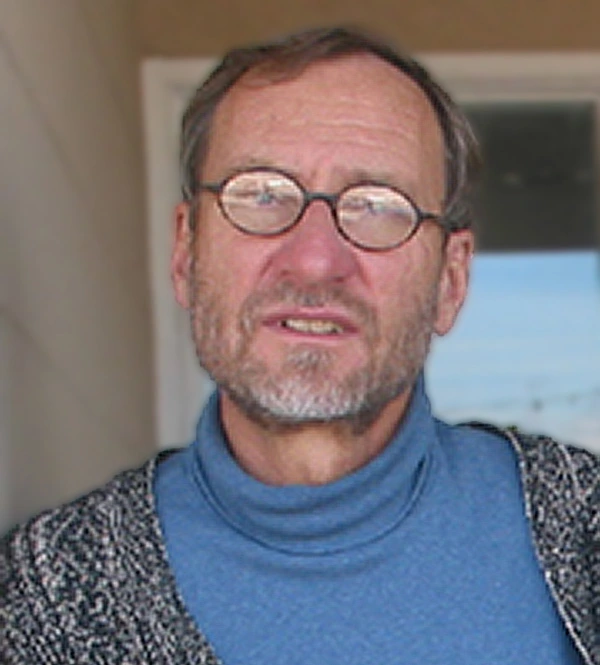Public Policy Review

This column is a bittersweet one. I say this because this issue of the newsletter marks the end of an era: Joe Gelt is retiring as Water Resources Research Center editor/writer after working tirelessly at the center for over 20 years. A key accomplishment during those years has been his involvement in launching this newsletter, the Arizona Water Resource. The newsletter bears his personality, and its success must be attributed to him. Along with the AWR, Joe’s other writing assignments included the Arroyo, WRRC’s other newsletter, which Joe also helped establish, as well as the myriad reports the WRRC has submitted over the years.
I knew Joe would retire someday, and the someday is now. That’s the bitter part of the news. There is, however, a positive side to sweeten and lighten bitterness. Along with Joe having more time to work on personal writing projects and to indulge in personal interests, he will continue working at WRRC part-time. Over the next several months, we’ll be figuring how this will be reflected in the frequency, format and length of the newsletter. I hope to hire a part-time associate editor, but with recent and looming budget cuts, this may not be possible with existing revenue streams. Although the WRRC has done a lot with limited resources, the current budgetary realities are of sufficient concern that I feel a need to inform you, our readership, about our efforts to continue to meet your expectations and our own aspirations.
When I was preparing to become WRRC director in 2004, I convened meetings of stakeholders to ask what they liked about the WRRC and what they would like to see more of. Their most common positive comment had to do with the quality of this newsletter. Many indicated that they look forward to reading it and appreciated receiving a paper version.
The WRRC has always sought funding to cover the production costs of the newsletter, including layout. The newsletter serves an important information transfer and outreach function. Further, through this column, it enables me to communicate with readers, providing information about water policy and WRRC matters.
More recently, we’ve offered organizations that help pay production costs the opportunity to include an insert in the newsletter. Fortunately many have taken advantage of this opportunity over the years to work with us. We thank all of you who have done so, and I invite others to contact me about newsletter sponsorship and support.
We hope to continue our recent tradition of publishing an Arroyo each winter. The Arroyo is our single-issue newsletter, now back on track after an hiatus from 2002 until 2007. The 2007 issue focused on recharge, and the 2008 issue was on river restoration. In early 2009, we plan to publish an Arroyo focused on water re-use. Claire Landowski, the E.L. Montgomery & Associates summer intern, continues to work with us on this upcoming issue. As
Joe and the WRRC move through this transition, we hope to maintain the quality you expect of us. Please do not hesitate to contact me with any feedback you might have and join me in wishing Joe well.
All of our publications are posted on our web site. We were able to secure grant funds through the US Geological Survey 104b program to hire a part-time applications systems analyst. John Dale joined us in August and is helping us maintain and improve our web site. (See Vapors, page 3, for more information about work on the WRRC web site.) The WRRC has administered the 104b grant program, authorized by the Water Resources Research Act, since 1964. For years now, this federal funding has been zeroed out each year. Securing continued federal funding, even for an established program such as this one, can be challenging. The funding has remained flat for many years, with the real purchasing power of the grants program diminishing over time. Nevertheless, this funding is critical to the WRRC, and I will again visit Washington this winter, along with water institute directors from other states, to request continued funding of this important national program.
Along with the water institutes in Texas and New Mexico, the WRRC is seeking federal support for the recently inaugurated U.S-Mexico Transboundary Aquifer Assessment Program. This federally authorized program, signed by President Bush in late 2006, is carried out in partnership with the U.S. Geological Survey. Work in progress includes an inventory of investigations and reports pertaining to the Santa Cruz shared aquifer; we expect similar work on the San Pedro to follow in the very near future. The authorizing legislation allows U.S. funds to be expended in Mexico for binationally prioritized assessment studies pending a 50 percent cost share (cash or in-kind) from Mexican resources. We are actively working with stakeholders from each binational aquifer, including representatives from Sonora, Mexico and the Mexican federal government. We recently had the two Arizona aquifers accepted for case study by the UNESCO Internationally Shared Aquifer Resources Management Initiative.
Space constraints prevent me from providing more of an overview, but please visit our web site and those of our affiliated programs, such as Arizona Project WET and Arizona NEMO, to obtain more information. More than ever, partnerships are essential to fulfilling our mission of promoting an understanding of critical state and regional water management and policy issues through research, community outreach and public education. We look forward to working with you!

